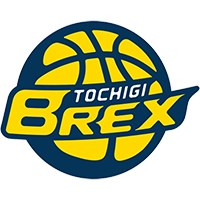
Kyle Nelson
Grant Jerrett arrived in Tucson as a McDonald's All-American and the 10th ranked player in the 2012 high school class. While the class of 2012 has had a rough transition from high school to the NCAA (and is considered to be one of the weaker classes in recent memory), Jerrett nevertheless struggled to live up to his lofty high-school billing, logging just 17.8 minutes per game in a crowded frontcourt with projected second round draft pick Solomon Hill and talented fellow freshmen Kaleb Taczewski and Brandon Ashley, averaging 5.1 points and 3.2 rebounds per game.
With that in mind, Jerrett's decision to leave Arizona after his freshman season and enter the 2013 NBA Draft came as a surprise to just about everybody in the basketball world. With Ashley and Taczewski returning, and Aaron Gordon and Rondae Jefferson on their way, minutes might have been even harder to come by in 2013-2014, but there was consensus on the fact that Jerrett didn't show much as a freshman to prove that he's ready for the NBA.
There has been much speculation as to why Jerrett ultimately decided to leave Arizona, but he and those close to him feel as though [http://www.sgvtribune.com/sports/ci_23068096/basketball-grant-jerrett-leaving-arizona-enter-nba-draft]he has a good chance to hear his name called on draft night, potentially in the first round, and this, rather than minutes or issues with the coaching staff, has motivated his decision. After a solid showing at the Pre-Draft Combine, it seems as though Jerrett might actually have a chance; the question remains: just how good are Grant Jerrett's prospects and what does he have to offer at the next level?
Standing 6'8.75 in socks and 6'10.25 in shoes, and with an impressive 7'2 wingspan, Jerrett has both the size and length to play power forward in the NBA. Though, as we observed during his senior year in high school, he has an awkward combination of high hips, skinny legs, and narrow shoulders, he gained over 20 pounds in the past season weighing-in recently at 232-pounds - and should be able to continue to add weight. Getting stronger, particularly in his lower body, and improving his frame overall, are important because he is a decidedly average athlete, a point that was reinforced at last week's NBA Pre-Draft Combine where he posted a 28.5-inch no-step vertical leap, 34-inch max vertical leap, without showing outstanding quickness - he runs the floor in an extremely awkward manner - or agility to compensate. While Jerrett has ideal size for the NBA power forward position, he has a lot of work to do in the weight room, it seems, before competing against more physical and athletic post players at a much faster NBA-pace.
On the offensive end of the floor, Jerrett proved to be remarkably one-dimensional player in college, without much in the way of productivity, efficiency, or versatility. He posted a bottom-five PER among prospects in our top-100, and averaged a paltry 5.2 points per game - 11.5 points per 40 minutes pace adjusted, ranking him as the least prolific scorer in our top-100 - on just 41% shooting inside the arc. That being said, he was also the lowest usage player in our top-100, seeing only 6.8% of Arizona's offensive possessions and taking just 8.2% of its overall field goals, and probably wasn't in line for a major bump next season.
Delving deeper into his offensive role, it becomes clear that even beyond his low usage rate, Jerrett was a very one-dimensional player in Arizona's offense. According to Synergy Sports Technology, 36.9% of his overall possessions were spot-up jump shots, 60% of his overall shot attempts are jump shots, and 85.1% of his overall jump shots come from behind the arc.
Moving from statistics into game film, it is clear is that Jerrett is, first and foremost, a jump shooter and a very good one at that. At 6'10 and as a freshman, he distinguished himself as one of the truly elite perimeter shooters in all of college basketball, let alone among big men in our database, where he made 40.5% of his 5.1 3-point attempts per 40 minutes. It is worth noting that he made 42.4% of his catch-and-shoot jumpers, as well, which is how he would be expected to utilize his jumper at the next level. On film, he shows solid mechanics, and while his setup is a tad deliberate, there is no doubt that he has the size and skill to knock down spot-up jump shots at the next level.
Additionally, it's worth pointing out that Jerrett made 72% of his perimeter jumpers at the Pre-Draft Combine, and proved himself to be one of the combine's top shooters, tied with UNC's Reggie Bullock and ahead of Cal's Allen Crabbe.
Elsewhere, his game is difficult to pinpoint, and the overall takeaway is troubling, to say the least. At first glance, he logged the third lowest 2P-FG% in our top-100 at 41%, actually one of the worst single season 2Ps% ever posted by a power forward in the history of our database. 15.9% of his offensive possessions came out of the pick-and-roll, where he looked best popping-out and spotting-up behind the three-point line, but rarely got the ball on the move around the basket. Even on the occasions when he rolled, he did not cut hard, and his awkward gait and average explosiveness did him few favors in his finishing attempts around the rim, despite his excellent size and length.
He had some success as a cutter, usually on the receiving end of dumps to the post, finishing easy layups and dunks around the basket. A significant issue, however, is the fact that he struggles to finish over and through bigger and more athletic players around the basket, which will only get harder at the next level. To put his struggles in perspective, he made just 42.5% of his 23 non-post-up shots around the basket. Additionally, his post game was virtually non-existent, as he attempted just 17 shots out of post-up opportunities. He only made five of these 17 attempts, an absurdly low 29.4%. In a very small sample size, he showed promise with his spin move, with better-than-expected footwork and quickness, but his over-reliance on his right hand, average leaping ability, and raw post repertoire are all areas of concern moving forward.
At this stage, Jerrett is as raw as they come on the offensive end of the floor, possessing only one but very much in demand NBA-caliber skill. He has been compared to players such as Ryan Anderson and Channing Frye in the past, but both of these players were far more advanced at 19 (turning 20 in July), in terms of productivity, versatility, and efficiency - and were sophomores in college.
On the defensive end of the floor, Jerrett lacks the lateral quickness to stay in front of skilled big men. Additionally, while he hedges hard guarding the pick and roll, he often struggles to get back into position. That being said, in both instances, he uses his length to stay involved, trailing the play, and is often able to contest the shot from behind once his man takes the ball to the hoop.
He blocked 2.1 shots per 40 minutes pace adjusted, as well, a testament to his length and instincts. In the post, Jerrett shows a solid feel on this end, and puts a good effort in as well. His high center of gravity and lack of lower body strength make it difficult for him to hold his position against bigger offensive players at this stage, but there are some things to work with here long term. Ultimately, Jerrett is a willing defender, inside and out, though his physical limitations and lack of toughness present some question mark as to whether he can guard NBA-level power forwards.
Arguably his worst quality on either end of the floor, however, is well below average rebounding, where he grabs just 7.9 rebounds per 40 minutes pace adjusted. This ranks him as the second worst rebounder among power forwards in this draft or centers in our top-100 and, unlike Ryan Kelly, he spends quite a bit of time in the low post on the defensive end of the floor. Looking towards the NBA, this is arguably the one thing that he most needs to improve on, focusing on boxing out and beating his man to the errant shots, and showing greater intensity and desire to make his presence felt on this end of the floor.
The aforementioned analysis paints a particularly bleak picture of Jerrett's prospects going into the 2013 NBA Draft. Furthermore, it may seem too harsh to critique a freshman big man for his raw post repertoire when he possesses such an intriguing physical profile as a stretch power forward. The main question is, what he can do on an NBA roster in the short term and will a NBA team have the patience to develop him until he's ready to contribute?
While Jerrett is a year older for his class, he is still young in the scheme of things and still has time to capitalize on the promise and versatility that he showed as a high school star; many high school big men simply struggle to make the transition from the high school level to the NCAA. He was a role player for Arizona and did not have many opportunities to play through mistakes on a veteran team with equally, if not more, talented young big men above and below him in the rotation. While it won't get any easier in the NBA, he could benefit significantly with a strength and conditioning program and having the opportunity to play against men on a nightly basis, potentially in the D-League.
Ultimately, Jerrett is largely an open book who, depending on where (and if) he is drafted could develop into a solid value pick-up for his size and perimeter shooting a few years down the road. The nature of today's NBA game, with its increasing emphasis on pick and roll play and spacing, makes him a rare commodity as a floor stretcher from the power forward position, which opens up driving lanes for teammates and forces opposing defenses to adjust. Coming off of a solid showing at the Pre-Draft Combine, continuing to impress scouts in workout settings will be essential. Getting drafted is not out of the question at this point, but it will involve a lot of work on the court and off of it to convince decision makers that he has what it takes to compete in the NBA and is worth investing in considering how far away he is from being able to contribute.

























Comments